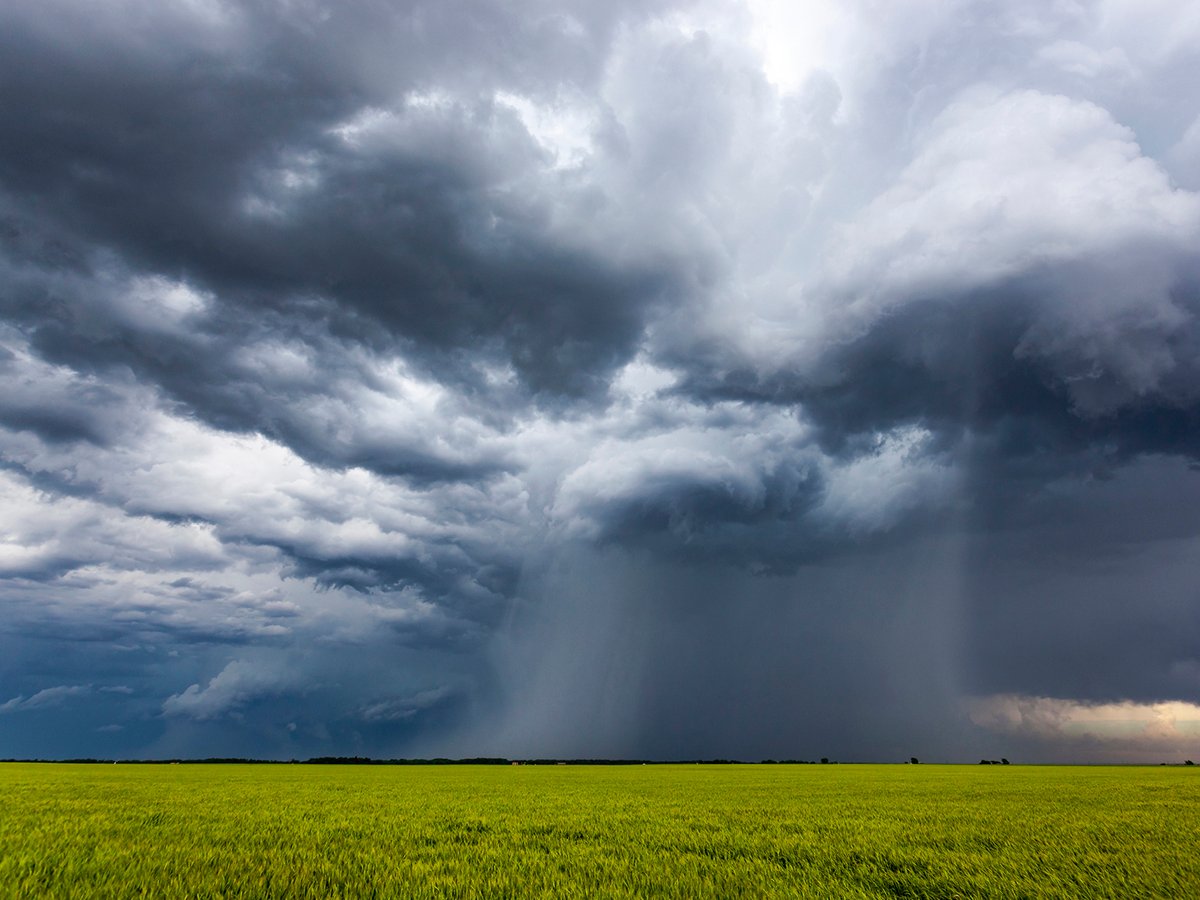SAANICH, B.C. – Each fall, Farmer Dan and his puppet sidekick, Jacques
O’Lantern, show schoolchildren how the apples in their lunch bags grow
on British Columbia farms. This hay wagon view of horticulture
illustrates what it takes to grow food, flowers and trees in the fields
and inside greenhouses.
Daniel Ponchet, 46, his sister Patricia Aspa, 41, their father Jacques
and his wife Marianne work together on their Saanich, B.C. farm
alongside a dozen full and part-time staff.
Read Also

Extreme rain increases as planet warms
In this issue, we are going to wrap up our look at extreme rainfall by examining the different weather patterns that tend to be associated with these rainfall events.
Near the original family farm is a Country Market store, opened last
year on Daniel’s land to replace a roadside stand.
Daniel is sold on direct farm markets, having helped create the South
Vancouver Island Direct Farm Marketing Association. Island growers,
both large and small, have a tradition of leaving their produce at
unstaffed roadside stands for sale on the honour system.
Consumers seeking locally grown food get help from the association’s
brochures and magazines, which detail the 60 growers’ locations by
region and post notices when various crops are ready.
People can see for themselves how food is grown, develop a rapport with
farmers and become more knowledgeable about what they see at the
grocery stores, said Daniel.
“There’s a lot more labour involved with retail, but it’s still better
off to be retail than wholesale, especially with small farms,” said
Daniel, who continues to serve on the association’s board of directors.
The Ponchets have used co-operatives and wholesalers, but Jacques found
direct markets provided steadier income and sales.
Patricia, whose graphic designer husband designs Le Coteau’s farm
brochures, said success on the farm comes from a knowledgeable and
enthusiastic staff, forming alliances with customers and developing a
loyal following.
“You have to form a trust with people you grow for, be able to deliver
on time and grow quality goods,” she said.
Patricia said Daniel is a driving force in the evolving farm, but she
worries the family’s resources are spread a little thin at times.
“My brother is a big dreamer and he wants to see things progress,” said
Patricia. “It’s good to keep going but you have to have the manpower to
maintain what is already started,” she said. “You have to have the time
and the energy to devote to that.”
Dan conceded it’s easier to focus on a couple of projects rather than
20. But the diverse offerings of art lessons, U-pick strawberries and
potatoes and kiwi harvests in November have made their business a year
round one.
The country market was made possible by Jacques, who supports the farm
by financing such projects. Patricia said that saves the business money
by avoiding banking fees and debt.
Jacques said little financing went into the farm in the early years,
other than a Farm Credit Canada loan used to buy equipment. He, with
Daniel and Patricia’s mother, cleared the land with a lot of sweat and
a little dynamite in the 1950s, while raising five children. He relied
on his expertise in various trades to do repairs himself.
“What we see now bears no resemblance to what it was then,” said
Jacques.
In the 1970s, he remarried, and today in semi-retirement, Jacques, 72,
and wife Marianne, 66, continue to keep their heads and their hands in
the business from their home overlooking the greenhouses and orchards.
They retreat to Mexico for several weeks each winter.
The farm name, Le Coteau, the French word for hillside, reflects
Jacques’s heritage. Seeing few opportunities to farm in France, he
settled on an undeveloped part of picturesque Vancouver Island due to
the temperate year-round climate. He bought land in increments with
money saved from logging, construction and farm labourer jobs.
The family’s farm has since expanded to 45 acres, including 20 rented
acres, and includes greenhouses, the garden centre and annual events
like the pumpkin festival, school tours and a petting zoo.
They grow apples, pears, kiwis, strawberries, potatoes, bedding plants,
ornamental and fruit shrubs, and trees under irrigation, but also
produce 36,000 chickens.
The store, built by high school woodworking students, features vaulted
ceilings and skylights, corn murals by a local artist and recycled
timber from a Victoria building. It includes many of their own
products, but also specialty items from others like ostrich meat, teas
and skin creams.
Patricia said they give back to the community that supports them at
their annual Pumpkin Fest, a family event featuring live music, pony
rides, farm animals and hay wagon rides that raises money for charities.
“We try to make sure we support the local community,” said Patricia.
There have been bumps along the country road, including bugs and
uncharacteristic heavy snows that flooded barns and killed 5,000
market-ready chickens and destroyed 13 greenhouses in 1996.
Energy costs for the greenhouse are high, as is freight to get their
chickens to processors on the mainland.
Wages that have risen to $8 an hour are also a burden in a business
that relies on increasingly hard-to-find labour.
“Food prices don’t go up accordingly,” said Marianne.
Urban encroachment is kept at bay by the province’s Agricultural Land
Reserve, which also limits the elder Ponchets’ opportunities for resale
in retirement.
Patricia sees a greater concentration on agritourism at Le Coteau Farms
in future. Their efforts to promote the industry were recognized last
year with an honourable mention award from Ag Aware BC.
The next generation of Ponchets has already had a limited role in the
work here, said Patricia, who noted her adult daughter has expressed an
interest in returning here one day.
“Once you’re here, you’re tied to it,” she said.














